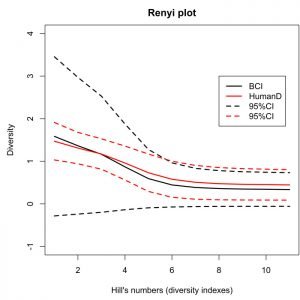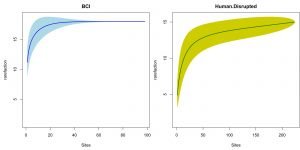Disease Ecology
Principal investigators: Gabriel Z. Laporta, Matthew J. Miller & Jose R. Loaiza
Collaborators:Montira Pongsiri, Meghan Radtke, Oris I. Sanjur, James Pecor, Desmond Foley, Laura Kramer, Gillian Eastwood, Jesus Altagracia Zepeda, Octavio S. Molinar, Marco Marklewitz, Sandra Junglen & Jason T. Ladner
Background
Emerging Infectious Diseases (EIDs) are the most alarming public health challenge of the twenty-first century. Globally, risky areas for pathogen spill-over (e.g., EID’s hotspots) are anticipated to occur in tropical regions where human population has grown considerably, intensifying the interfaces between people, domestic animals and wildlife, particularly in the context of habitat disturbance and climate change.
Mesoamerica generally, including Panama, and more broadly across the Neotropics too, continue to face perhaps as many several medical emergencies involving arthropod-borne diseases as any other tropical region in Africa and Asia. These include current or recent outbreaks of dengue, Chikungunya, Zika, Mayaro, Leishmaniasis, malaria and Chagas disease, among others. In recent years the threat from EIDs carried by arthropods has increased due to a rise in the worldwide shipping trade, urban development and anthropogenic habitat disturbance. In particular, this has led to the emergence of several new pathogens from forest animals into people, which have then rapidly spread across the world to cause regional epidemics throughout Latin America. Our inability to sustainably control arthropods— vectors of emergent pathogens—is the single largest factor behind the rapid increase of these diseases in Latin America.
Findings & developments
- Mosquito species diversity and relative abundance vary due to changes in forest habitat quality, and these ecological changes have consequences for arboviral disease emergence.
- Colonist mosquito species are more likely to be involved in or capable of pathogen transmission than climax mosquito species, and vector species occurrence decreased notably in undisturbed forest settings.
- Entomological risk and related pathogen exposure to humans is higher in pristine forest scenarios for Culicoidesand Phlebotominae sandflies transmitted diseases, whereas forest disturbance poses a higher entomological risk for mosquito-borne infections.
- Old-growth forest conservation in tropical rainforests is a highly-recommended solution for preventing new outbreaks of arboviral and parasitic diseases in anthropic environments.
Relevant publications
- Loaiza JR.† Larissa C. Dutari, Jose R. Rovira, Oris I. Sanjur, Gabriel Laporta, et al. 2017. Disturbance and mosquito diversity in the lowland tropical rainforest of central Panama. Scientific Reports 7: 7248.
- Ari Whiteman, A. Mejia, I. Hernandez, Loaiza JR†. 2018. Socioeconomic and demographic predictors of resident knowledge, attitude, and practice regarding arthropod-borne viruses in Panama. BMC Public Health 18:1261.
- Loaiza JR.† Jose R. Rovira, Oris I. Sanjur, Jesus Altagracia Zepeda, James Pecor, et al. 2019. Forest disturbance and insect disease vector risk in the lowland tropical rainforest of central Panama. Tropical Medicine & International Health,24(7): 849-861.



